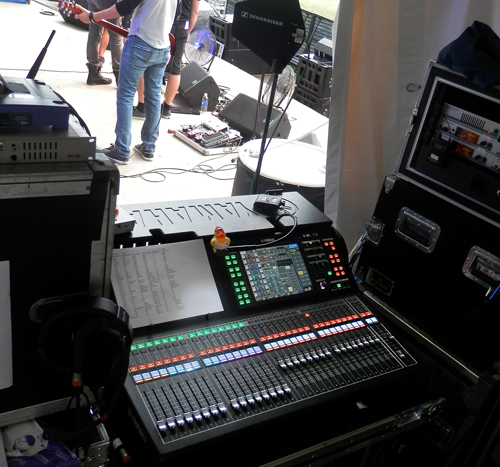
The problem is that most of the fundamentals are right in there, from voice to guitar to piano to keyboards, and even bass. Horns, too, if you have them. So it’s easy to accumulate too much mud, and using an overall EQ certainly helps.
I should point out that not just any ol’ EQ is up to the task for managing the air and the mid cut. Generally, a parametric plus HF shelf will work well if it’s a quality device. And certainly the drive rack can be used – the DSP of today is ideal for slight coloring EQ.
In other words, tweak the system and get the kinks worked out, then add a touch and/or take away a touch were needed. It gives the system a little more life for your mix.
If You Can Hear It, It’s Too Much
I’m talking about compression, of course. Like EQ, it should be used sparingly and only when there is good reason.
Compression seems to be the most over-used processing of today (and for the past 10 years at least), particularly in mastering for recordings. But it’s over-used live, too. Music should have dynamics, although there are types like cookie-monster metal that don’t have dynamics.
In terms of how compression is used – if you can hear it, it’s too much, whether on individual tracks or the whole mix. One can argue that “if you can’t hear it, then it’s not doing what it’s supposed to do,” but if you can hear the actual effect of compression, i.e. “pinching, pumping, breathing” or the like, then it’s overblown. If the tone of the instrument or singer is affected, it’s too much.
What should compression actually do? Let’s use vocals as an example. Even when a singer knows how to work the mic, compression can help smooth out the level so that the vocal stays on top. It also helps the softer parts sound full.
On bass, compression can even out what is often a source that wanders around quite a bit in terms of level. Nothing helps make a mix sound solid than a steady, pulsing bass that is locked with the drums. Compression can help with drum overheads but is easily overdone.
Bringing It Together
With the overall mix, compression can be the “glue” that keeps things locked together. But here again, it’s easy to overdo it and lose individual sounds (just as with EQ).
So what’s the magic setting? There isn’t one, but I’ve found that any ratio over 4:1 is often too much. Soft knee is better.
